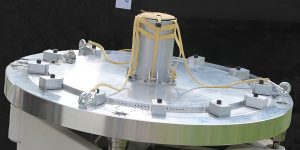Space activities
Parachute Deployment Device

Vega and its successor Vega-C are European launch vehicles designed to place small and medium payloads into orbit. They use solid rocket motors in their early stages. Each stage needs a reliable ignition system to start combustion and deliver the expected performance. Therefore, igniters play a crucial role in ensuring safe and consistent launches.
Igniters work like small rocket engines. They create the energy needed to ignite the solid propellant inside the boosters. For the original Vega, three igniters were used: the P80 first stage, the Z23 second stage, and the Z9 third stage. With the upgraded Vega-C, APP engineers introduced two new igniters. These are the Z40 for the second stage and the Z9A for the third stage. In addition, the designs build on proven Vega technology while also meeting the higher performance demands of Vega-C. When activated, each igniter burns a dedicated propellant charge. This process creates a hot, high-pressure gas jet. The jet flows into the main motor and heats the surface of the solid propellant. As a result, the motor ignites quickly and reliably. The ignition sequence follows three steps. First, the system sends the command to fire. Next, the igniter propellant burns and produces hot gas. Finally, this jet lights the solid rocket motor. Because of this precise chain of events, igniters guarantee smooth stage transitions and mission success.